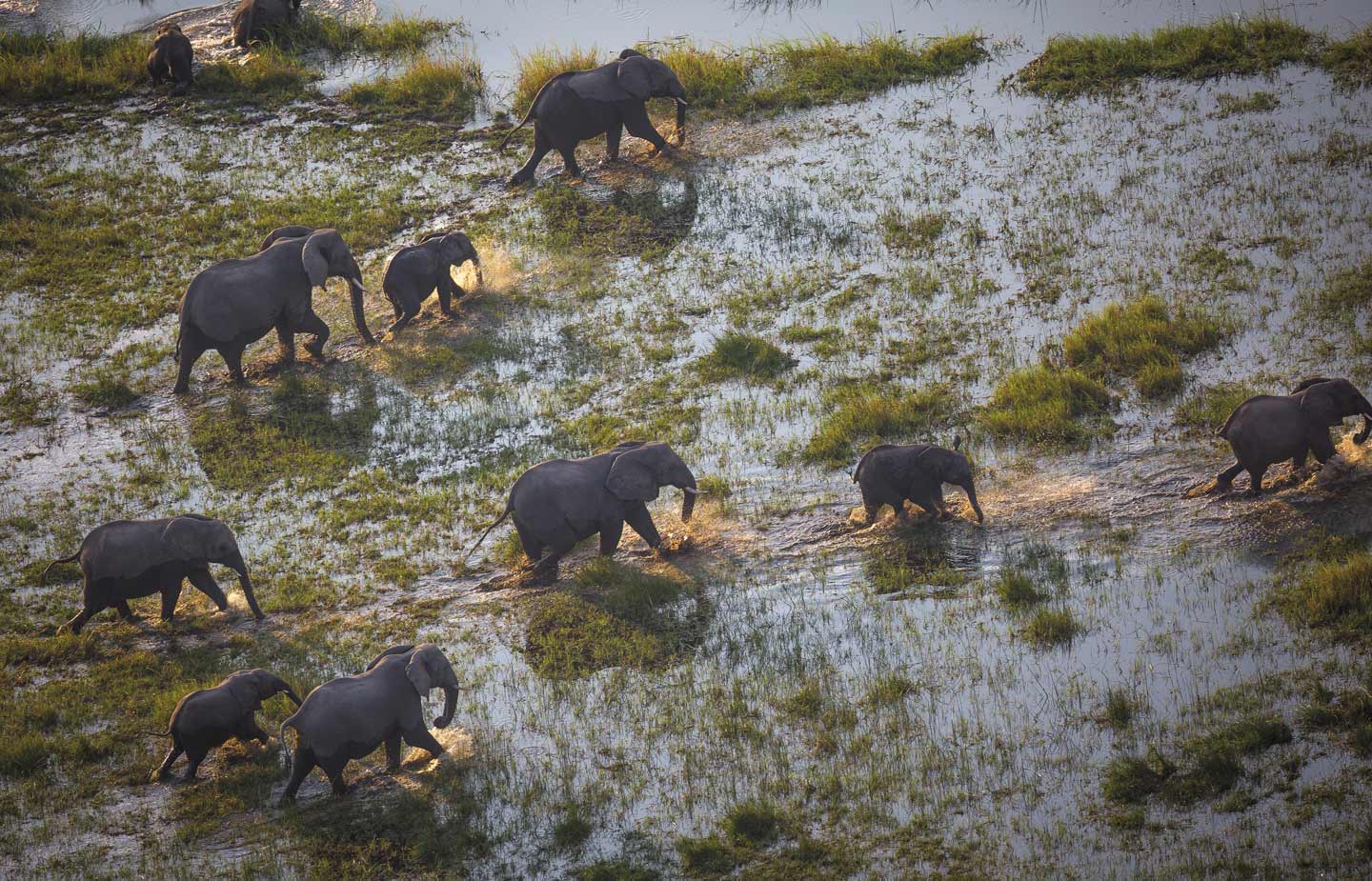The River
In a new National Geographic film, editor and writer Brian Newell ’05 crafts a tale of the human and environmental threats faced by Africa’s mighty Okavango River Delta.
The Okavango River Basin, a wild ecosystem that spans Angola, Namibia and Botswana, provides sustenance and habitat to a breathtaking diversity of wildlife. The world’s largest remaining population of African elephants bathes in its waters. Lions and cheetahs hunt the surrounding plains. Hundreds of rare bird species nestle on its banks while crocodiles slip beneath its surface. In northern Botswana, the river turns into one of the planet’s most Edenic landscapes—the vast wetland wilderness known as the Okavango River Delta.
Into the Okavango, a National Geographic documentary film released in December, follows South African conservation biologist Dr. Steve Boyes, Angolan marine biologist Dr. Adjany Costa and Botswanan boatman Tumeletso “Water” Setlabosha as they travel by traditional canoe (mokoro) more than 1,500 miles down this massive river toward the delta, a site under increasing threat from human activity.
One million people rely on the Okavango river system for water. These same people, though, pose an ever-increasing danger to the delta’s animal and ecological welfare. The film chronicles activities ranging from agricultural development in Angola to electricity projects in Namibia to human incursion into wildlife habitat in Botswana that are reducing the area’s biodiversity.
Brian Newell ’05 served as editor and writer on Into the Okavango. He and director Neil Gelinas spent 18 months crafting a character-driven story documenting the adventure of a lifetime, one that also encourages its audience to better protect this near-pristine paradise.
But before the final cut hit the screen, Newell started with an “ungodly amount of footage”—literally hundreds of hours of film.
“At some point, you just have to pick scenes and start cutting,” said Newell, who began editing before Gelinas had returned from the four-month expedition. “The most important thing is for people to fall in love with this place right away.”
So although the literal journey began in Angola—where the explorers were escorted through fields of undetonated landmines, a relic of the country’s 27-year civil war—the film opens in the delta.
Once people have connected with the location, “you try to create these ups and downs of emotion to keep people feeling both excited and also worried about the [Okavango].”
Providing structure throughout the film was the protagonists’—Boyes, Costa and Setlabosha—trek from the highlands of Angola to the Botswanan delta.
“That was a great backbone, because even if we were messing around with [the narrative] and jumping around a bit, we knew that these people are thousands of miles up this river with one goal—to get down it,” said Newell.
By journey’s end, the scientists collected data from 50,000 locations along the way, chronicling dozens of new scientific discoveries and shedding fresh light on the delicate interconnections that bind humankind with nature.
“They’re doing all this science as they go, collecting data, but they’re on their way toward the delta. That journey acted as a kind of true north.”


